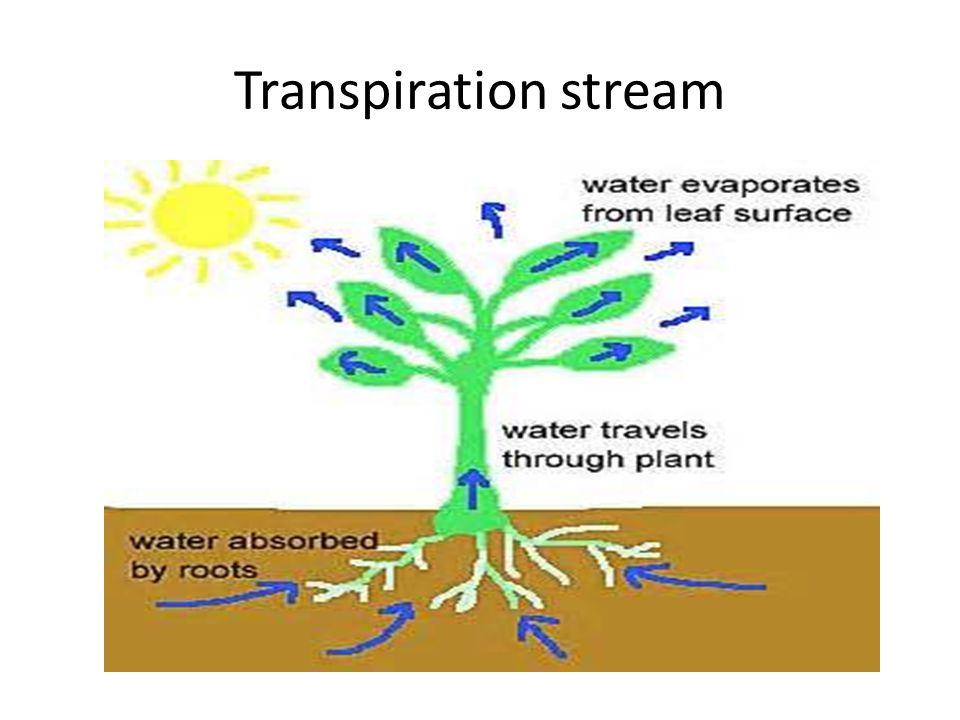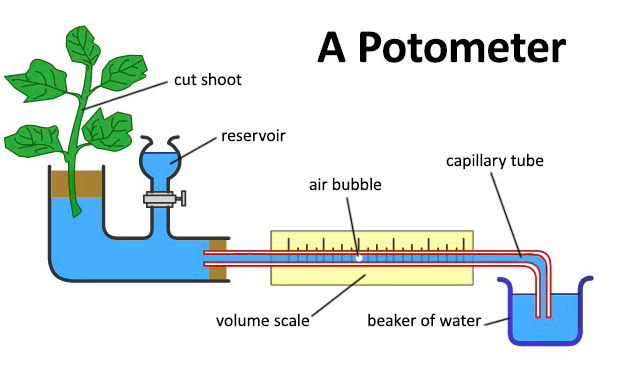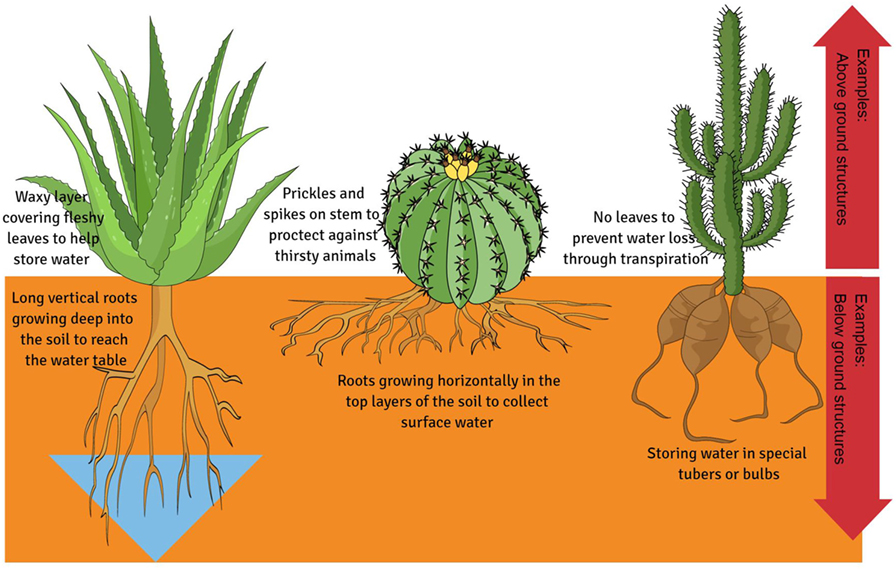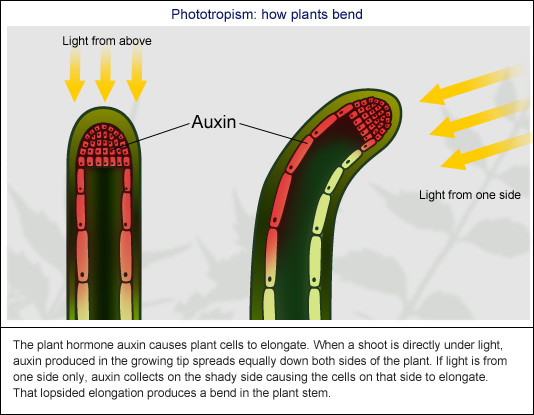Transpiration and Hormones
Transpiration
Transpiration is a method of transporting fluids (water and minerals) around and out of the plant.
- Water that is found on the surface of these evaporates and leaves the leaves by diffusion.
- Water is then drawn out of the xylem cells within the leaves to replace water lost by this evaporation, as the leaves need water in order to photosynthesise.
- The xylem cells form continuous tubes down to the roots and, as water is lost from the leaves, more is drawn up from the roots.
- Transpiration is continuous and so there is a slow but continuous flow of water through the xylem tubes.
Leaves have a lot of small holes underneath, allowing gases to diffuse in and out. The hole is called the stomata. There are two guard cells around the stomata, and that changes shape in order to allow the gases to diffuse in and out. The stomata is usually open during the day and closed during the night, as photosynthesis can only take place during the day time.
Environmental Factors
If the rate of transpiration increases, then the root will absorb more water from the soil. The follow are a few__ environmental factors__ that can affect the rate of water uptake by a plant:
- When the temperature increases, more water will evaporate from the cell surface. This increases the rate of diffusion of water from the leaf.
- When there is low humidity, there is less of a concentration of water on the outside of the leaf. This increases the rate of diffusion of water from the leaf.
- When there is more air movement, water vapour is removed more quickly on the leaf surfaces. More water will diffuse off the surface.
- When the__ light intensity__ is higher, their rate of photosynthesis increases. The stomata will then open up so that water can diffuse out of the leaf.
Rate Calculations
The rate in which transpiration takes place can be measured by looking at either the decrease in mass of the plant due to water loss, or by looking at the volume of water that is absorbed.
A potometer can be used. When the water moves through the plant as it is absorbed, the air bubble will move along the scale. This will allow you to measure the transpiration rate.
Plant Adaptations
There are many different types of plants, and each type of plant has a set of characteristics that allow them to be adapted __to survive __in extreme environments.
- In hot or dry environments, the stomata may open at night and close at day. This would prevent water from being lost from the plant.
- Leaves can be reduced into spines so that there is less surface area for transpiration to take place.
- Certain leaves have a reduced number of stomata so that less transpiration takes place.
- Some leaves have a waxy leaf cuticle (Shiny layer on top), meaning that it is impermeable to water. This decreases the amount of evaporation that can take place.
- Some leaves are rolled, have leaf hairs and stomata that are sunk in pits. This would all the leaf to trap moist air, which would increase the humidity. As a result, this would reduce the diffusion of water vapour.
Tropism
Plant hormones can control and coordinate plant growth and development.
- Auxin is a plant hormone which is vital during__ phototropisms__ and gravitropisms.
- Auxin can be found in stem tips and roots, and it is in charge of controlling the direction of growth for the stem tip and roots.
A tropism is when there is a growth that is responding to a stimulus. Plants tend to grow towards water and sunlight, as these are 2 essential things that plants require in order to survive.
- Positive tropism is when the plant grows __towards __the stimulus.
- Negative tropism is when the plant grows away from the stimulus.
- Phototropism is when the plant grows towards the direction of sunlight.
- Geotropism is when the plant grows towards the direction of gravity.
Plant Hormones
Auxins are found in the tip of stems and roots, but it travels down the shaded side of the plant so that the growth on that side can speed up.
If the tips are cut off or covered, then auxin is not produced and phototropism will not take place.
Plant hormones are commonly found in weedkillers and rooting powder. Selective weedkillers can be used to kill certain types of plants that are unwanted (e.g. weeds)
- Gibberellins are used in germination, fruit and flower formation and the production of seedless fruit. This allows plants to be grown all year round.
- Rooting powder can be used as it makes stem cuttings develop roots quite quickly. Growth hormones will be found in rooting powder.
- Ethene is used in fruit ripening. This is helpful as it would either delay the ripening of the fruit so that it looks fresh for longer.
- What is transpiration?
- Your answer should include: Transporting / Fluids / Plant
Explanation: Method of transporting fluids (water and minerals) around and out of the plant - What is rooting powder used for?
- Your answer should include: Stem / Cuttings / Roots / Quick / Quickly
Explanation: Allows stem cuttings to develop roots more quickly than usual. - When a shoot is directly under light, where is auxin produced, and where does it spread down?
- Your answer should include: Tip / Shoot / Spread / Equally / Both sides
Explanation: Auxins are produced in the tip of the shoot, and the auxin will spread equally down both sides of the plant.



